Package Exports
- react-native-network-logger
This package does not declare an exports field, so the exports above have been automatically detected and optimized by JSPM instead. If any package subpath is missing, it is recommended to post an issue to the original package (react-native-network-logger) to support the "exports" field. If that is not possible, create a JSPM override to customize the exports field for this package.
Readme
react-native-network-logger 
An HTTP traffic monitor for React Native including in app interface.
An alternative to Wormholy but for both iOS and Android and with zero native dependencies.
Features
- Log networks requests on iOS and Android
- View network requests made with in app viewer
- Debug network requests on release builds
- Individually view headers sent, received and body sent and received
- Copy or share headers, body or full request
- Share cURL representation of request
- Zero native or JavaScript dependencies
- Built in TypeScript definitions
Screenshots
iOS
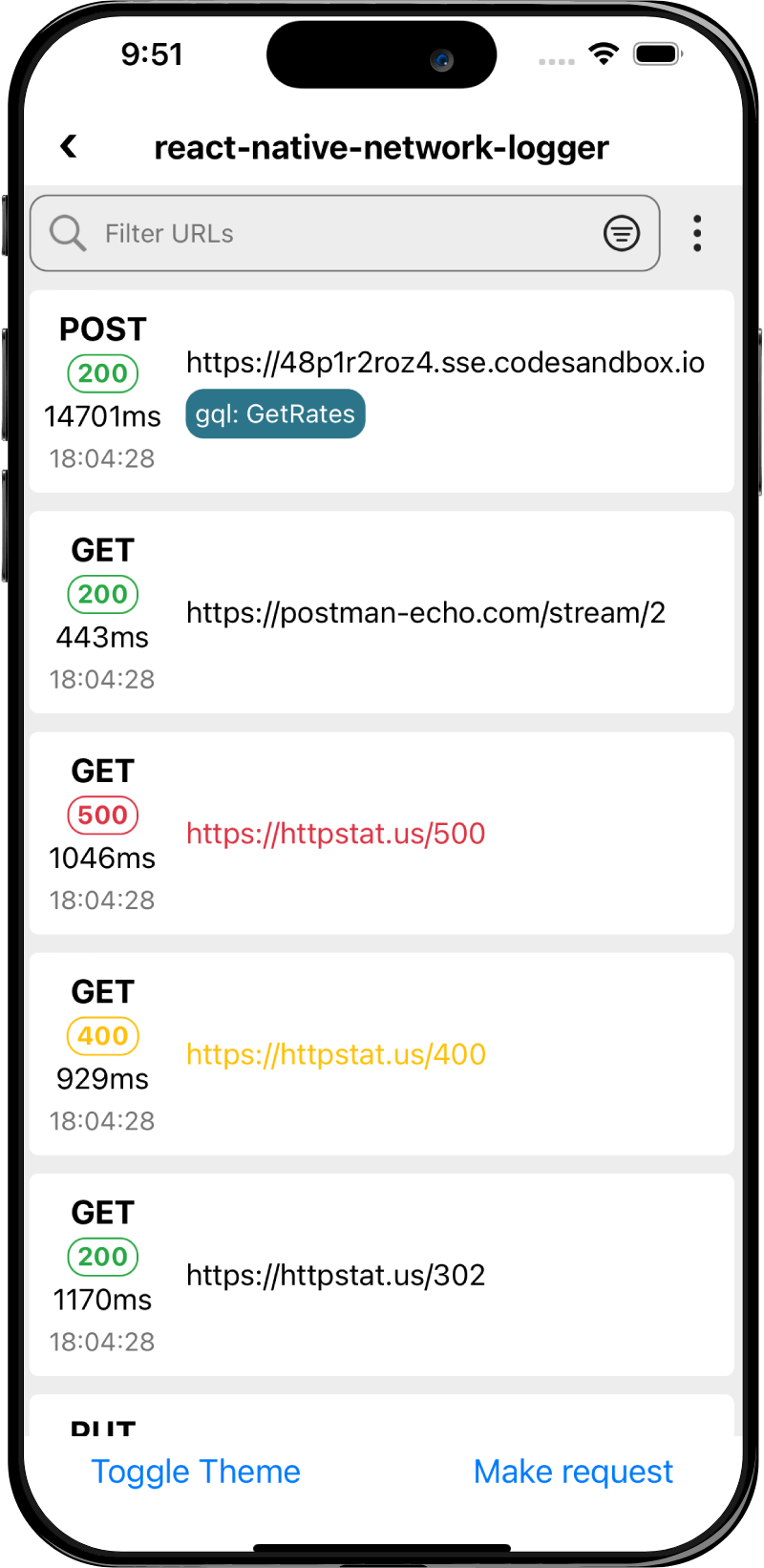
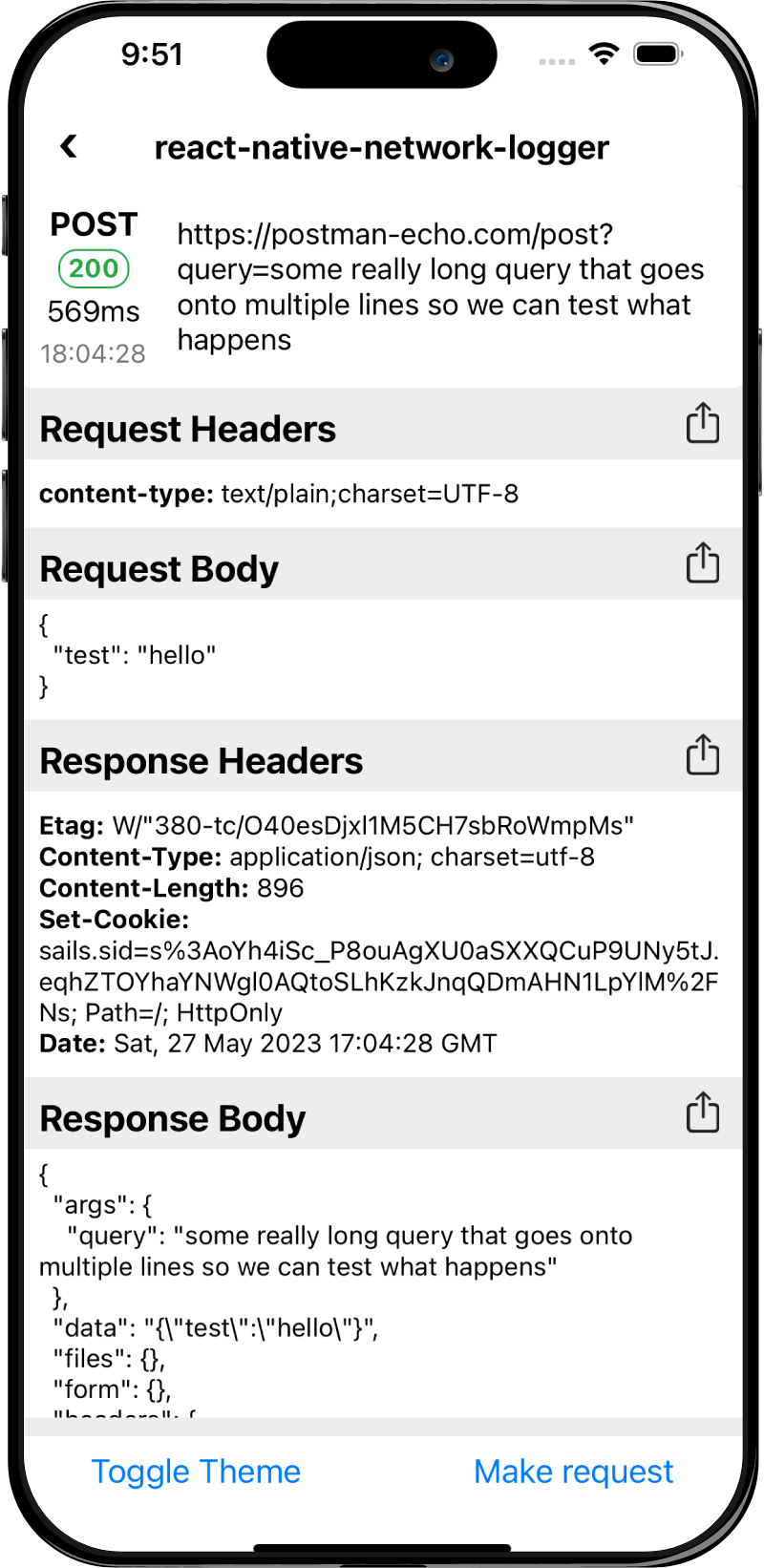
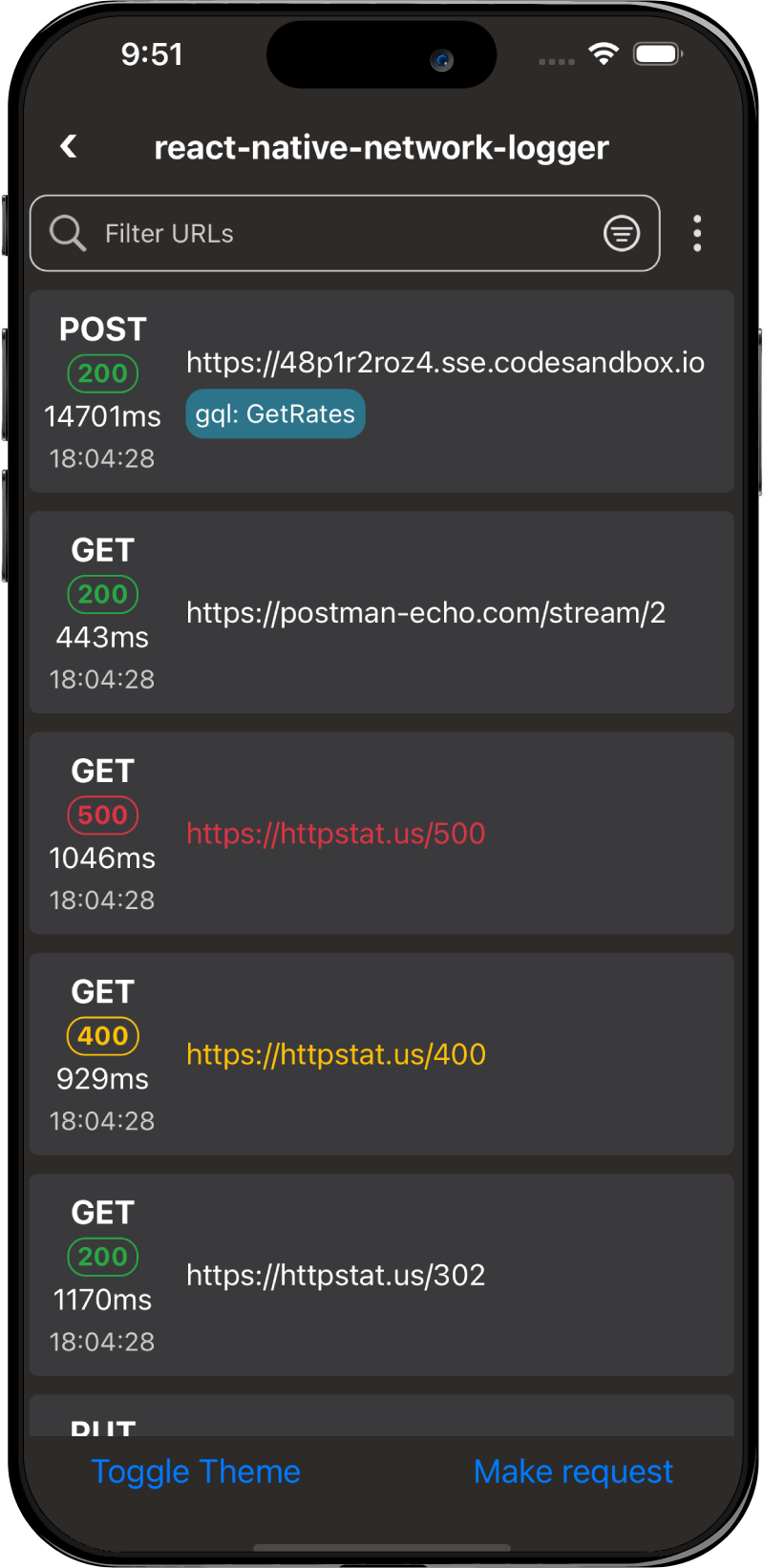
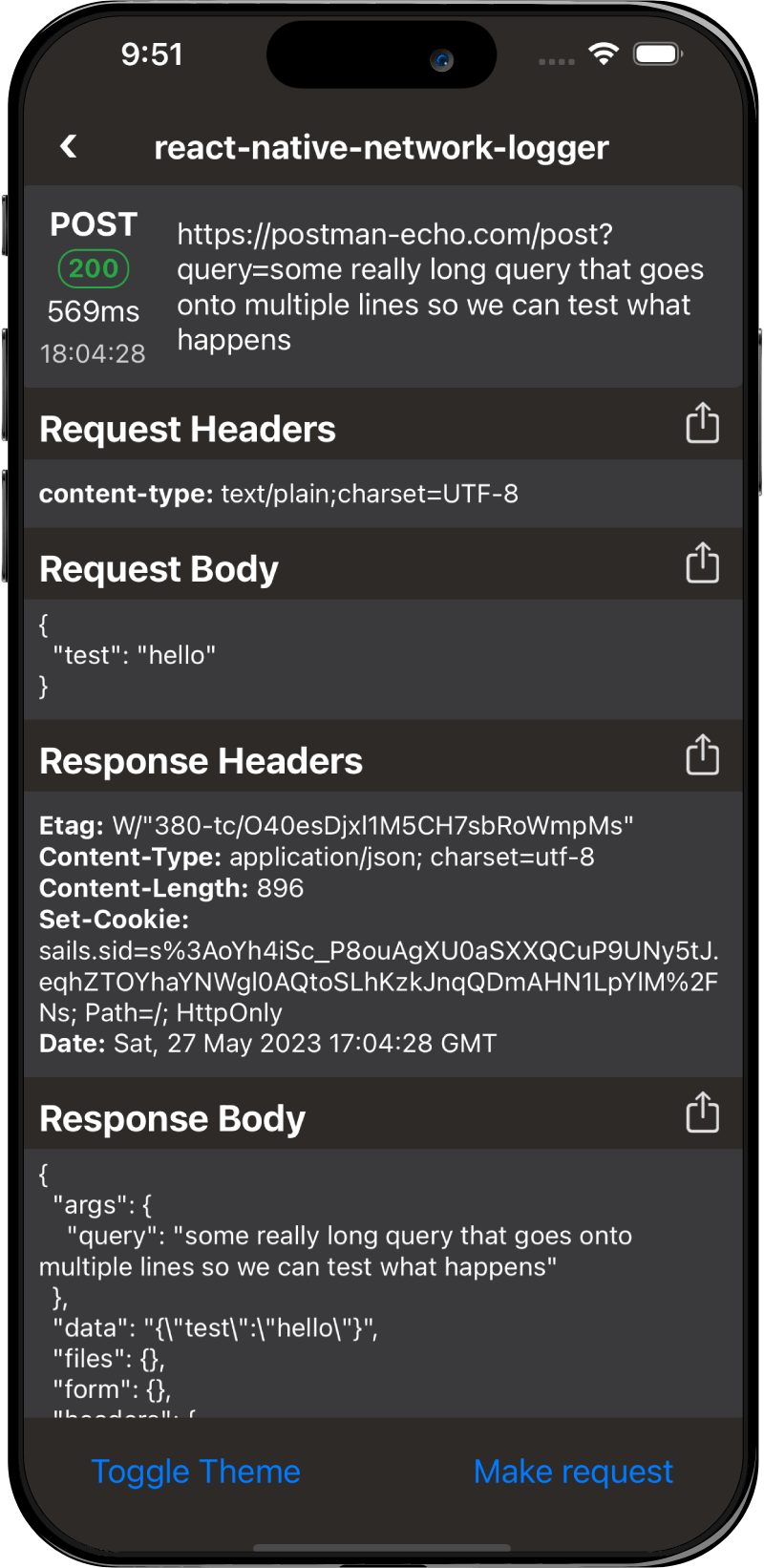
Android
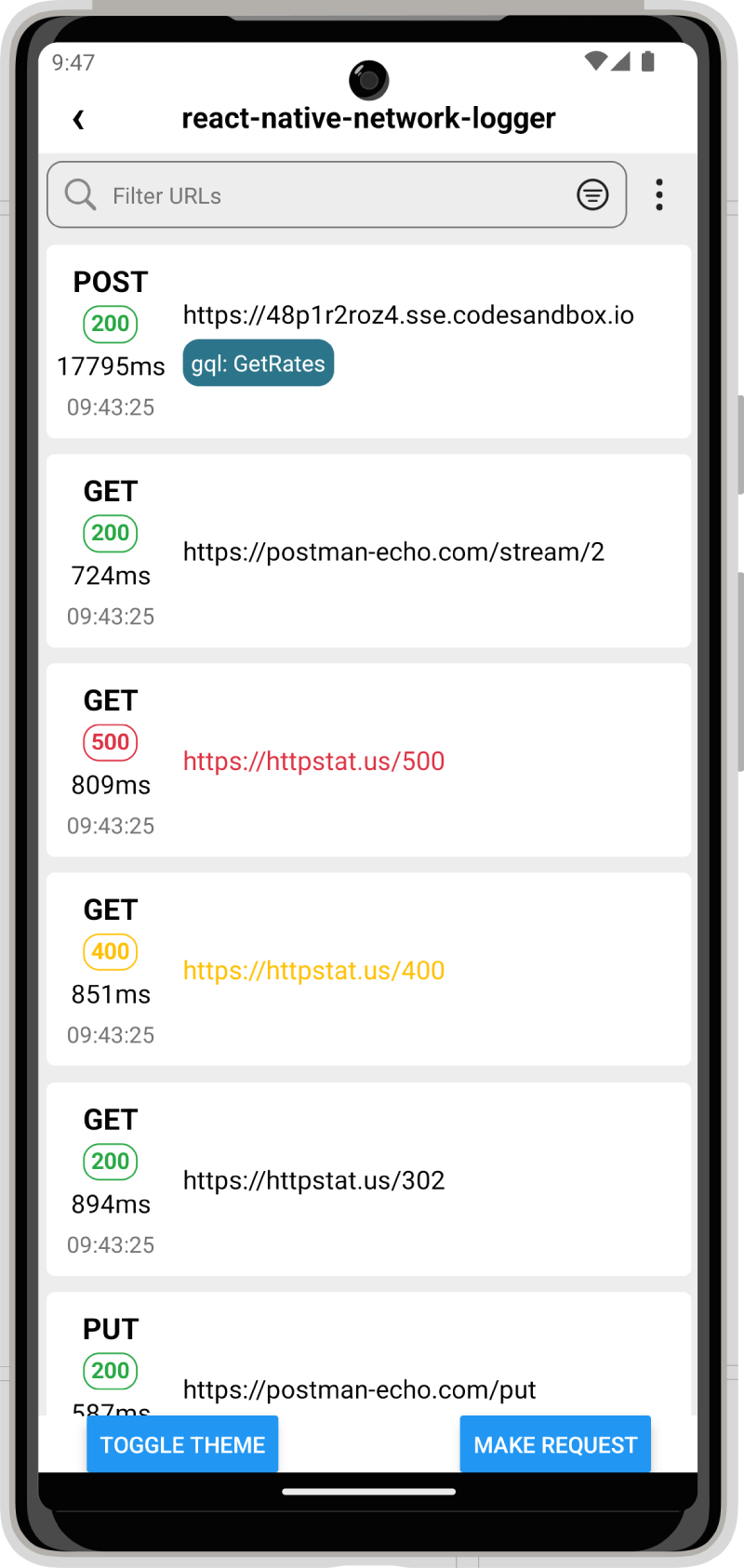
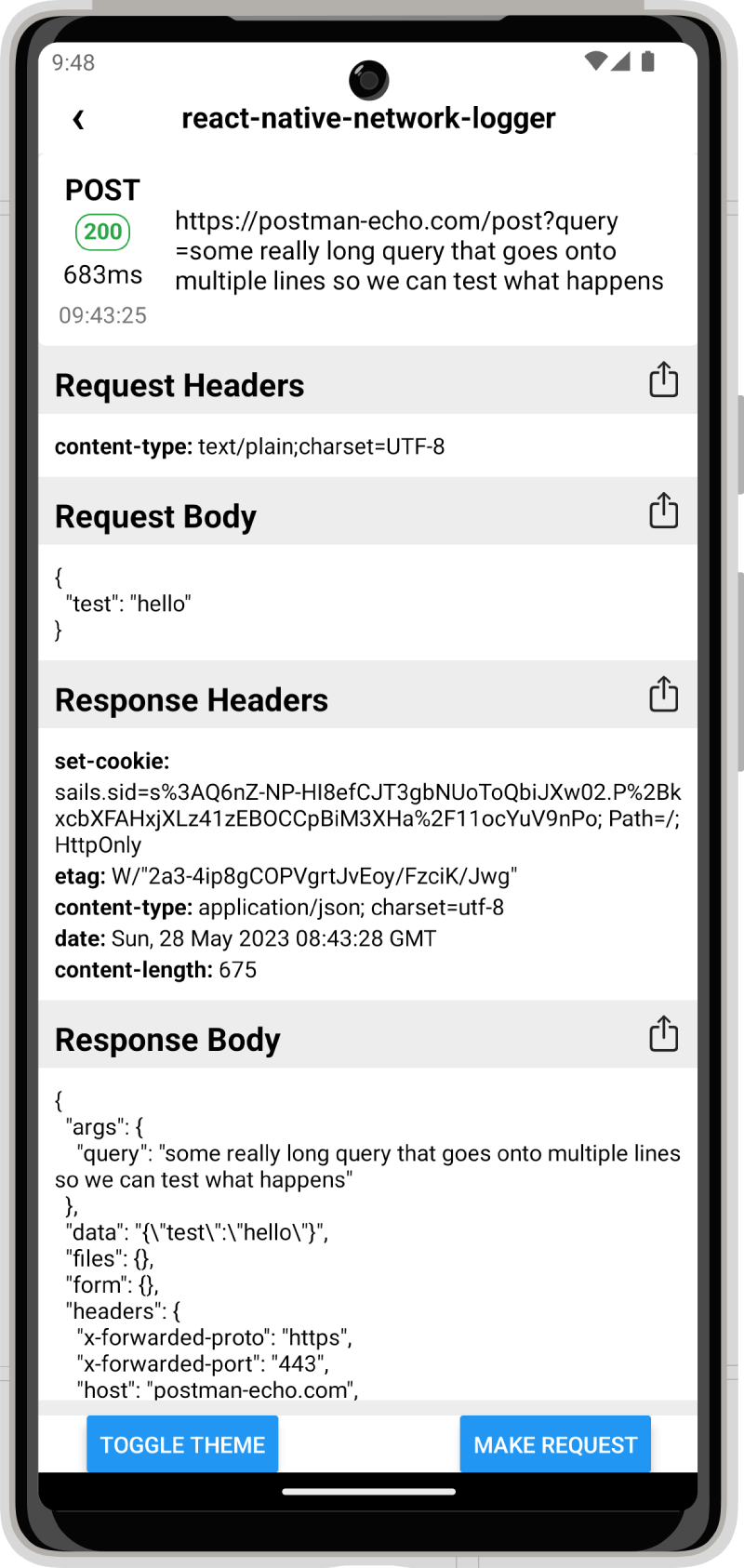

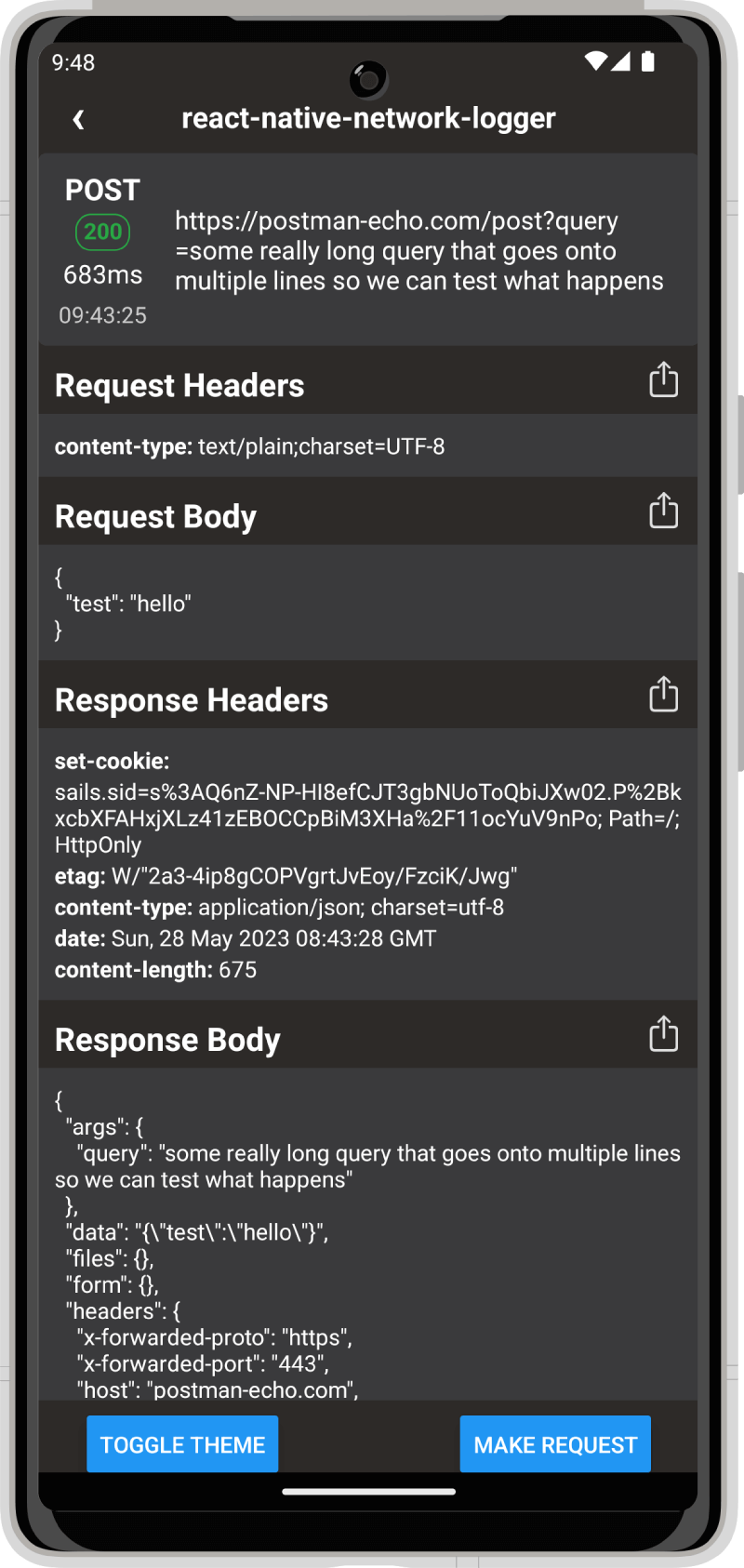
Setup
Install
yarn add react-native-network-loggeror
npm install --save react-native-network-loggerStart Logging
Call startNetworkLogging in your apps entry point to log every request, or call it on a button press to manually trigger it.
import { startNetworkLogging } from 'react-native-network-logger';
startNetworkLogging();
AppRegistry.registerComponent('App', () => App);Display Requests and Responses
import NetworkLogger from 'react-native-network-logger';
const MyScreen = () => <NetworkLogger />;Themes
You can change between the dark and light theme by passing the theme prop with "dark" or "light".
import NetworkLogger from 'react-native-network-logger';
const MyScreen = () => <NetworkLogger theme="dark" />;Logging options
You can configure the max number of requests stored on the device using by calling startNetworkLogging with the maxRequests option. The default is 500.
startNetworkLogging({ maxRequests: 500 });Example App
To test the example app, after cloning the repo, install the required dependencies by running:
yarn bootstrapThen start the example app by running:
yarn example startYou should then be able to open the expo server at http://localhost:3000/ and launch the app on iOS or Android.
For more setup and development details, see Contributing.
Contributing
Please read CONTRIBUTING.md for details on our code of conduct, and the process for submitting pull requests.
License
This project is licensed under the MIT License - see the LICENSE file for details.





